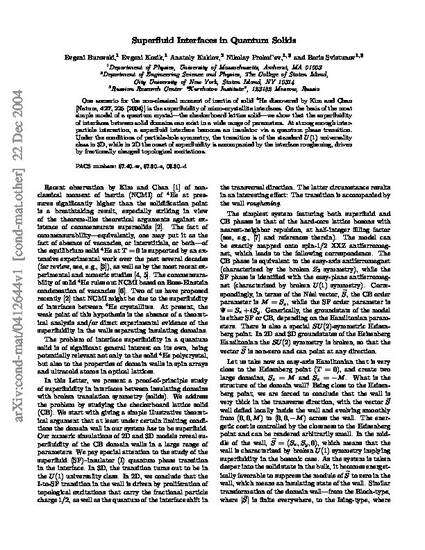
Article
Superfluid Interfaces in Quantum Solids
Physics Review Letters
Publication Date
2005
Abstract
One scenario for the nonclassical moment of inertia of solid 4He discovered by Kim and Chan [Nature (London) 427, 225 (2004)] is the superfluidity of microcrystallite interfaces. On the basis of the most simple model of a quantum crystal—the checkerboard lattice solid—we show that the superfluidity of interfaces between solid domains can exist in a wide range of parameters. At strong enough interparticle interaction, a superfluid interface becomes an insulator via a quantum phase transition. Under the conditions of particle-hole symmetry, the transition is of the standard U(1) universality class in 3D, while in 2D the onset of superfluidity is accompanied by the interface roughening, driven by fractionally charged topological excitations.
Disciplines
Comments
This is the pre-published version harvested from ArXiv. The published version is located at http://prl.aps.org/abstract/PRL/v94/i16/e165301
Citation Information
E Bourovski, E. Kozik, A Kuklov, Nikolai Prokof'ev, et al.. "Superfluid Interfaces in Quantum Solids" Physics Review Letters Vol. 94 Iss. 16 (2005) Available at: http://works.bepress.com/nikolai_prokofev/81/
